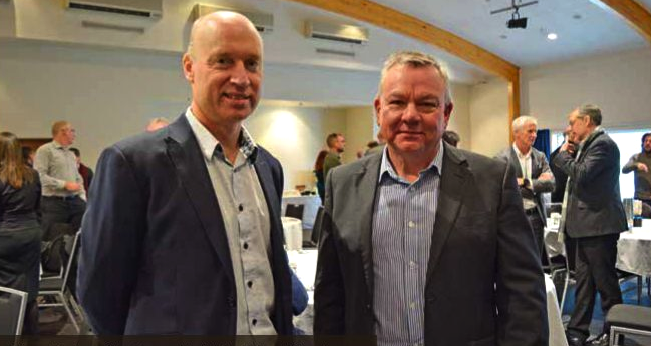Steps being taken by the Rotorua Lakes Council to deliver on developmental opportunities for the region have been given a resounding thumbs up from members of the Rotorua Business Chamber.
Support for current and future projects was shown in an almost unanimous show of hands at a recent Rotorua Business Chamber gathering addressed by Rotorua Lakes Council chief executive Geoff Williams.
Chamber president John McRae told more than 60 chamber delegates present that the meeting had been called to fill in the knowledge gaps.
“We’ve all heard little bits and pieces of what is going on in terms of the development of the city, but we realise that the big picture is missing,” he said. “It’s important for us to synchronise.”
Williams ran delegates through a video showing ongoing developments between 2013 and today, saying it showed that Rotorua “is on the move”. Average house prices had almost doubled, he said, new homes were being built, and demand was driving rents up. There has also been a strong sense of urban renewal, driven by people and businesses moving to Rotorua.
“We were in a moribund state. Things had to change, and they did.”
– Geoff Williams
Figures show the city has grown by about 1000 people annually, year on year for the past few years.
He said the pipeline for recent consents included 526 residential lots, 51 rural residential lots, eight inner-city apartments and 73 residential units, several new building developments, two new inner-city business developments, and a building re-development for a hotel.
“It hasn’t always been like this,” said Williams.
“Things were very different in the 1990s when we really flat-lined. Over a period of 15 to 20 years, Rotorua lost 50 more people on average per year than it gained. We were in a moribund state. Things had to change, and they did.”
He believes council has a responsibility to invest in public infrastructure to ensure Rotorua continues to attract people and inspire businesses to relocate to the region.
“In order to survive into the future, cities have to see themselves as operating propositions for those who are there those wanting to move there,” said Williams. “They have to have a point of difference, propositions that are unique and become the drivers for those wanting to settle here.”
Continuing to invest in key projects
He said council is continuing to invest in key projects that, while not new, are crucial for Rotorua’s future development. Among them is the airport redevelopment and lakefront revitalisation, the development of both the Rotorua Museum and the Sir Howard Morrison Performing Arts Centre, projects linked to entrances to the Whakarewarewa Forest, an upgrade of the Aquatic Centre and development around Kuirau Park, the cycleway network, the future-proofing of existing water treatment plants, and investment in road upgrades and wider roading corridors.
Affordability and sustainability was always a question, Williams said, but a sound credit rating of Aa- from the Fitch International was an indicator of continuing confidence.
He said Rotorua Lakes Council’s philosophy of not working alone and finding partners for major projects, meant that input from ratepayers was being matched by funds coming in from those partners.
“Effectively, our ratepayers are getting a two-for-one deal on the big projects. For every dollar they put in, there are two dollars coming in from
elsewhere.”
He said rating levels in the region were average and had been held at quite low levels when compared with other territorial councils.
William challenged those who have suggested council put off what they termed the “nice to have” projects in preference for retiring debt.
“These projects are not necessarily debt-funded. They are cash-funded and most of that is not coming from council. Putting them off would see us revert to a no-growth scenario.”












